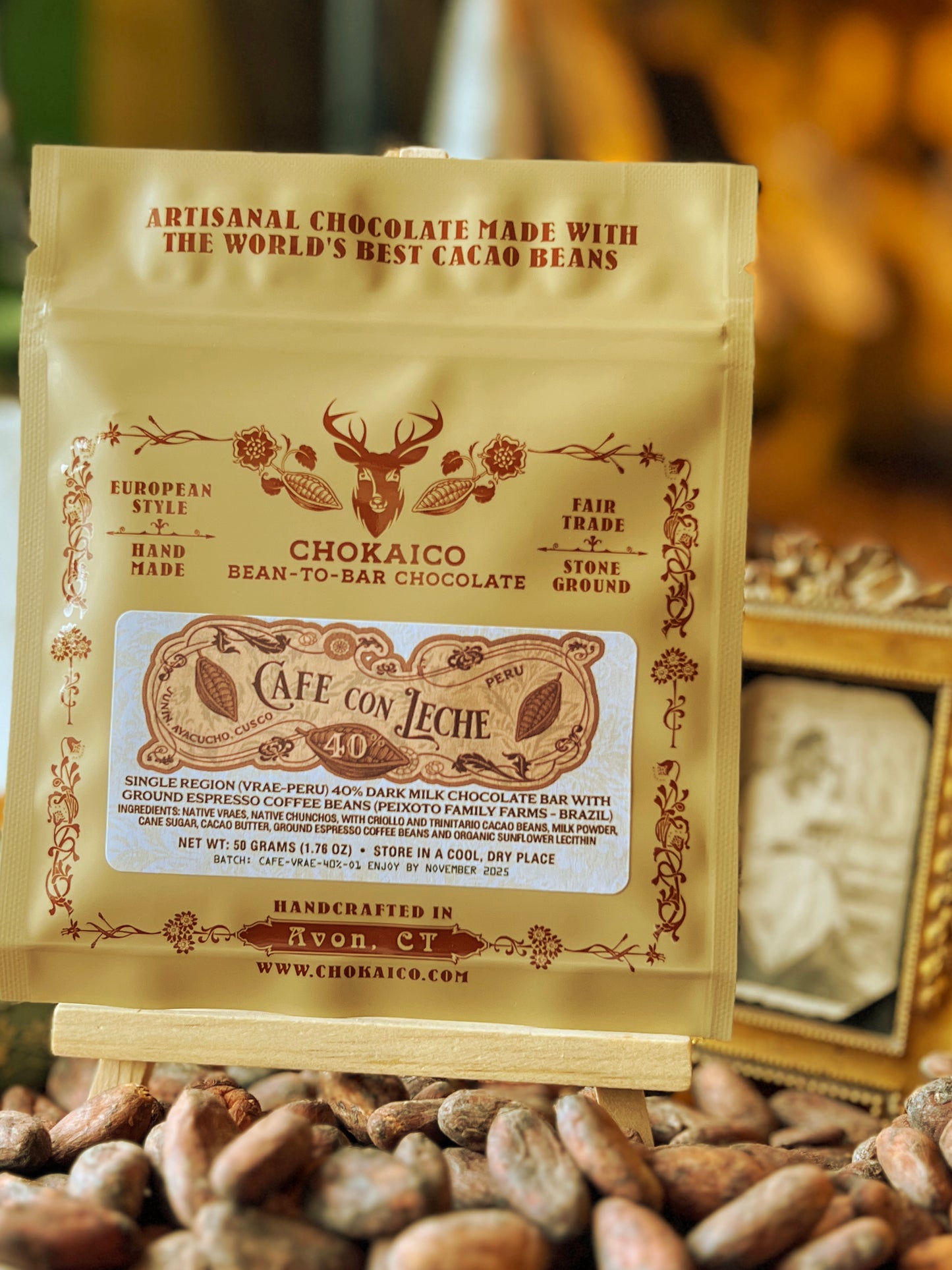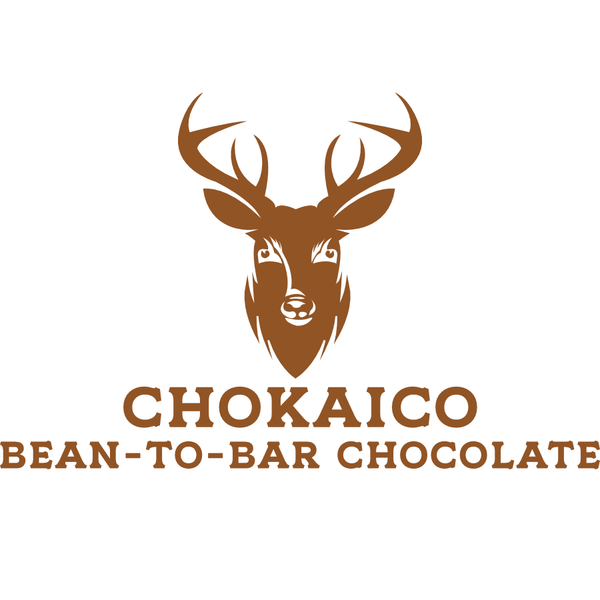Cafe con leche -VRAE 40% Dark Milk Chocolate bar - Junín, Ayacucho, Cusco -Peru
Cafe con leche -VRAE 40% Dark Milk Chocolate bar - Junín, Ayacucho, Cusco -Peru
Couldn't load pickup availability
Cacao bean provenance: Junín, Ayacucho, Cusco, Peru
Our café con leche bar is a memorable combination of the finest cacao beans from Peru and a single-farm, specialty coffee from Minas Gerais, Brazil. We source our cacao beans from The Bop, a local roaster located in Hartford.
We love how this bar turned out, and after trying it, you'll agree! The cinnamon and spice notes from the VRAE bean blend so smoothly to become a creamy, delectable treat.
Ingredients: Native VRAEs, Native Chunchos, with Criollos and Trinitarios beans, organic cane sugar, cacao butter, and ground coffee beans.
About this bean:
(From our bean supplier)
The VRAE bean origin comprises a variety of exceptional Native aromatic cacaos, including VRAE-15, VRAE-99, and Native Chunchos, as well as Criollos and Trinitarios. It’s harvested at an altitude of 400–1300 m and exhibits a flavor profile that's fruity (soursop, mandarin, custard apple), with herbal to floral notes.
The fermentation is conducted in Tornillo hardwood boxes—an exceptional type of wood for fermenting that does not impart flavors to the cacao—and lasts six to seven days, with a daily bean rotation initiated after the first two days. After a very well-controlled box fermentation, the VRAE beans are then transferred to mounds to dry, with stirring of the mounds occurring for two to four days, depending on the sun exposure. From there, the mounds are spread out over covered tarps or mesh shelves, where they finish drying in the shade. The total drying process typically takes around seven days but can vary due to cloud cover and weather conditions.
So, what does VRAE stand for, and where is this region located?
It’s an acronym for Valley of the Rivers: Apurímac, Ene, Mantaro. Technically, it should be VRAEM, but the norm has been VRAE (sorry, Mantaro River). This valley resides at the intersection of these three rivers on the border of the departments of Junín, Ayacucho, and Cusco. A humid and fertile tropical region with >1500mm yearly rainfall that’s perfect for growing exceptional cacao, among other things.
What adds even more intrigue to this bean is the role it’s played in reshaping the VRAE region. Historically, this has been an area with considerable coca leaf production—a crop with various medicinal functions that are inextricably linked to the Indigenous way of life, which, unfortunately, also happens to be the main ingredient in cocaine. As a way of freeing people from the oppressive farming conditions and disrupting the illicit cocaine supply chain, the Peruvian government, alongside other international governments, has been incentivizing alternative crop growing, like coffee and cacao.
For over 15 years, this international collaboration has assisted farmers with networking, infrastructure, management, security, and certifications (organic), helping the people of this region achieve more dependable income, more environmentally sustainable farming practices, and a better way of life.
Some of the beneficiaries of these efforts have been the farmers of the El Quinacho co-op. A co-op we’ve had the pleasure of working with for several years that has grown to include 255 producers (of which 89 are women) managing an average of 1.35 hectares.
Share




